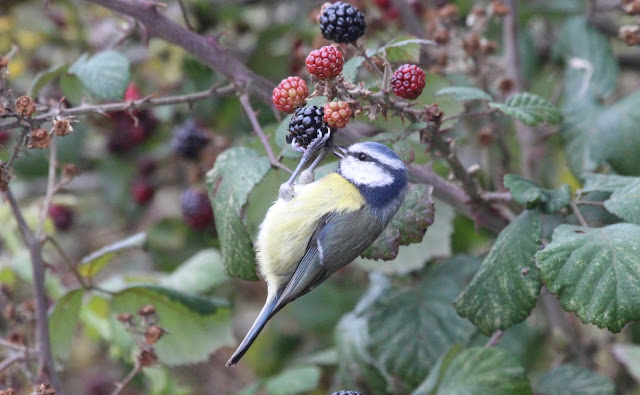'Normality' is slowly returning, and part of that is trips to star spots without having to pretend its on my way to work, or I have any reason other than wanting to go and see some birds. So, Frampton Marsh, with Mike travelling separately and later.
The formula for a good day is to get the target birds, in this instance Dotterel, on the list as soon as possible, then just relax and enjoy the wildlife. So how did that go?
Helpful locals directed me to the SW corner where said star bird was loafing around in the company of a few Golden Plover on the wet farmland that constitutes the SW portion of the reserve. As I approached everything went up, and a small plover amongst the Goldies was clearly it, so, Dotterel on the year list.
Mike had arrived and gone to the sea wall. I texted the Dotterel had flown in his general direction, and when I finally got one there he directed me to some Golden Plover on the ground with an accompanying wader. They were asleep and some way off, hence only limited views were available. I must admit, I knew the Dotterel was not a full adult female, but I hadn't expected it to look so plain, the eyestripe so dull, so like a Grey Plover. Mike was circumspect about it but I was happy to tick it.
We went up the sea wall taking in the mass of birdlife on both sides. Ruff were everywhere with the majority males in their summer finery. Honestly worth going just for these birds, but in there too were masses of Blackwits and Avocets, with Ringed and Little Ringed Plovers and a few Dunlin mainly in winter, and then two Spotted Redshanks. One was dusky, but the other jet black apart from the spangling on the back. If you showed someone all the waders apart from Spotted red and asked them to guess what the last one looked like, no-one would ever guess all Black. Just an outstanding bird.
We carried on round, battered briefly wind rain and hail, and had the first of 5 Whimbrel on the sea-ward side. We looked hard for the Black-Necked Grebes but couldn't locate them, and later learned they may have departed as regular scrub removal may have made the habitat unsuitable this year.
Back to the centre, a pair of unseasonal Goldeneye flying past, and then back down the main path. A warden summoned us over and showed as a Blue-Headed Wagtail giving outstanding views. The warden thought it may have some Channel Wagtail in it as it was paler than a previous bird, but to me was a classic Blue-headed; blue-grey head, face and nape, thin white super, slight white in the sub-ocular patch, white chin. My first since, ummm, well some time last century.
The fun didn't stop there. We were told a Jack Snipe had been seen yesterday right in the corner of a lagoon close to the road - and there it was, bob-bob-bobbing. Then back on the sea wall, a fellow birder shouted 'look - Whinchats!' as two Wheatears landed in front of us. I would find it a laughable mistake if I hadn't myself done the same on a couple of previous occasions. These birds were males, but sandy on the back and very bright vivid peachy/orange on the breast, making confusion on a quick view easy. Maybe Greenland birds?
We had lunch well satisfied with the haul, and decided after lunch to walk the southern wall as Mike was keen to get a better view of the Dotterel still having doubts over the first non-definitive view. We duly had it pointed out to us, and there it was, with a patchy pink breast, large well marked scapulars, and a stonking eye-stripe. Ah. Clearly the bird I had seen earlier was not this! I think best described as a learning opportunity. We carried on round adding Hare and Roe Deer to the list, a few more Whimbrel, then from the sea wall Mike picked out a Pale-Bellied Brent Goose amongst several hundred Dark Bellied Brents, and that was it apart from repeat sightings of a pair of adult Mediterranean Gulls, which might be the same ones, or not.
A fantastic day. Not just the species, but the numbers. 40+ Ruff, similar numbers of Yellow Wagtail, 3 species of hirundines plus Swift, Sedge Warblers everywhere, The constant noise of breeding colonies.
It takes a few goes to get comfortable with a place. To know the spots to go, the paths, where to stop and watch, how long to allow for, how to pace the visit. This was my third trip to Frampton, and I finally feel I'm getting to grips with the scale of the place. And what a place, simply crammed with birds.
Given the nature of this year, plenty of year ticks. Not just Dotterel, but Dunlin, Ringed Plover, Spotshank, Whimbrel, Ruff, Brent Goose. And Grey Plover, I'm having that too.












